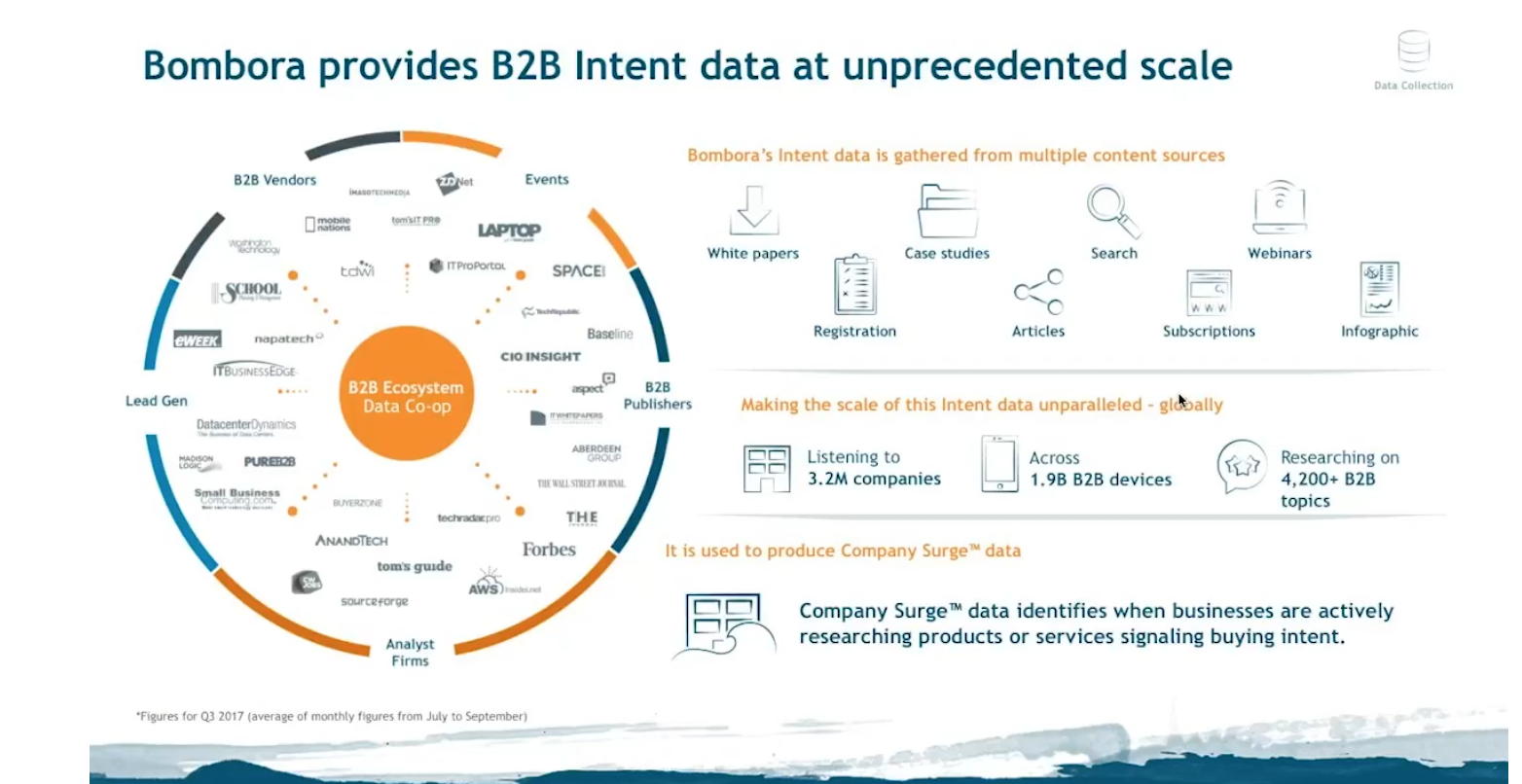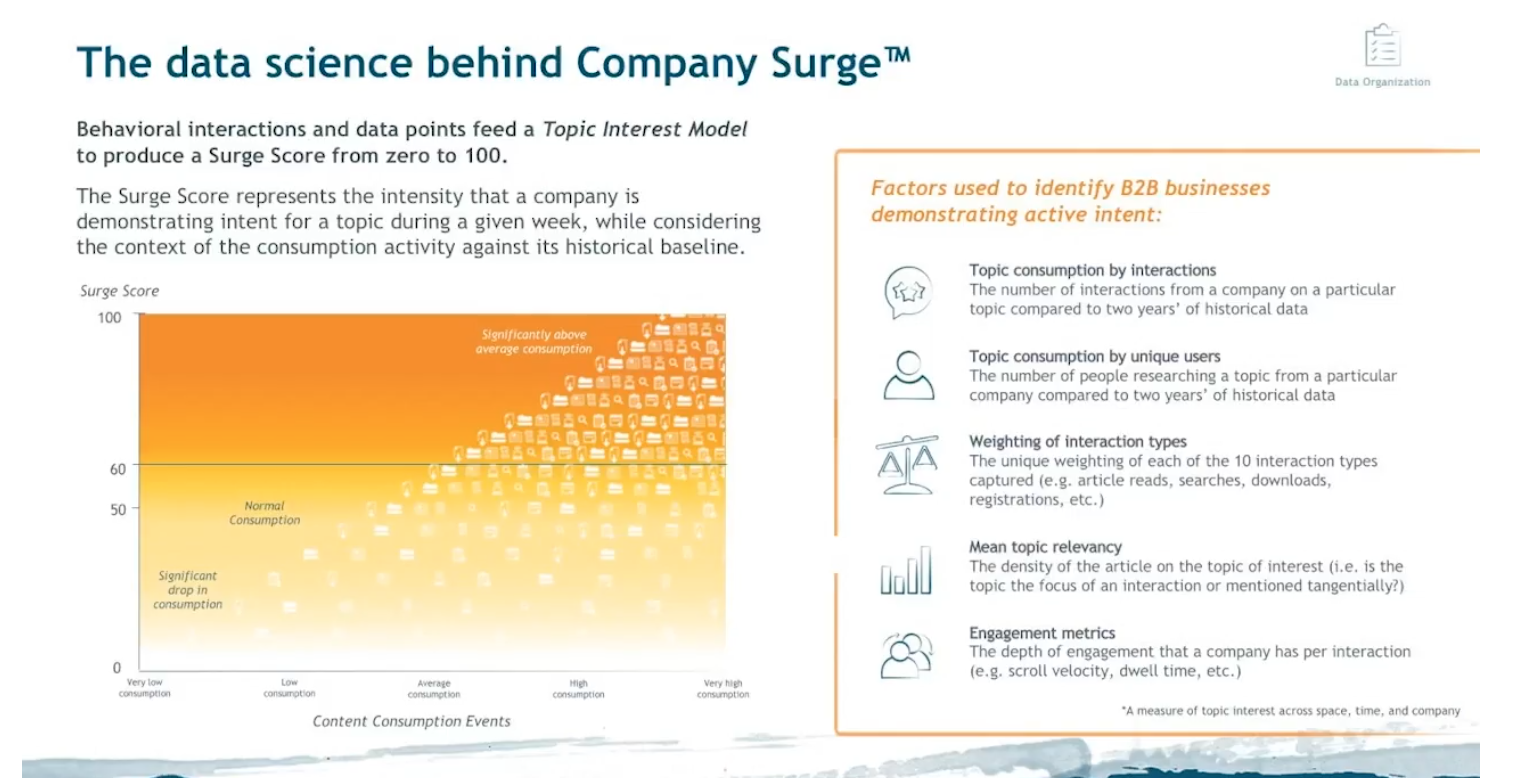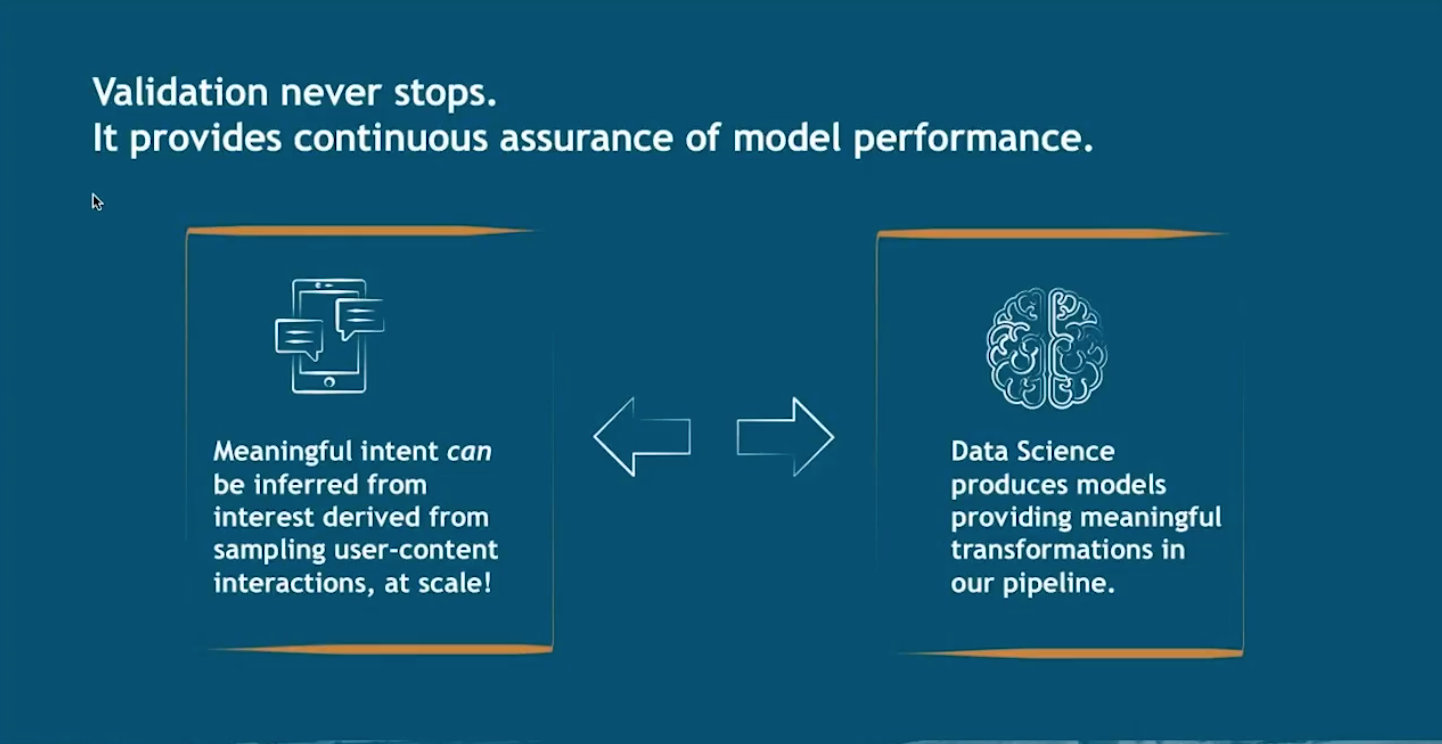How can marketers obtain this knowledge? Is there available data and technology that can predict if a company is showing interest in a specific topic?
The answer is, of course, yes. It is called intent data. Charles Crnoevich, Head of Partnerships at Bombora, gave an informative talk about how intent data works and what role AI plays in it during the 2018 AI Growth Summit.
What is intent data?
So, you may be wondering what exactly is intent data? Intent data is the data about what content is being consumed and what observed behaviours are exhibited. This data gives insights about the person. In turn, the information can be used to predict an intention to take an action. In short, it takes an individual’s recent interactions to see what they will do next.
In a B2B context, the focus is based on a company’s intent as opposed to that of an individual.. However, much of the data gathering and analysis is the same as it would be with an individual consumer. This is particularly helpful now because so much of the of the buying process is done by companies well before they get in touch with a sales person.
How does AI fit in?
Bombora works within the B2B space and use a tag on high traffic and diverse websites to gather behavioural intentions. Cookies and profiles of visitors are created so that Bombora knows who the individual works for and even where they are located. They can then evaluate that company’s intent based on the contact’s interaction with the content viewed.
AI is used to append topics to the articles people are viewing. This makes is possible to monitor what topics a specific company is researching and interested in.
Because interactions with content are not always the same, AI is used to get a more in-depth look at the interaction with content to see what kind of interaction is happening. Different articles are scored differently. The example given is someone reading an article that mentions CRM analytics in passing and another person reading a blog post comparing CRM analytic software providers (ie the pros and cons of such systems). The comparison post would be scored higher as it shows that the reading is probably within the buying cycle
When does it stop?
That’s sort of a trick question. There is no stopping point with AI. AI needs to be trained with valuable data. And, as has been said many times, your AI is only as good as the data you feed it, validation of your data is a continuous process. There is always room for improvement and your team needs to make a dedicated effort to continually enhance it.
Want to learn more?
If you’d like to learn more about AI’s role in intent data, listen to Bombora’s full presentation from the AI Growth Summit here.





Recent Comments